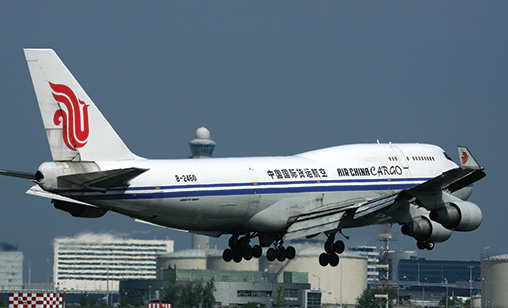Air Cargo
Asia-Pacific air cargo drought finally breaks
Air cargo is emerging from a painful seven year slump and industry leaders are confident that recovering freight volumes are not a repeat of the false dawn of 2010.
September 1st 2017
There have been signs since last year that air freight has been slowly and steadily recovering and now statistics are available to back up the anecdotal trend. Read More »
New data from the International Air Transport Association (IATA), released last month, reported demand measured in freight tonne kilometers (FTKs) grew by 10.4% in the first half of 2017 compared with the same period in 2016.
 |
The results, which are almost three times higher than the industry average growth of 3.9% in the last five years, represented the air cargo industry’s strongest performance since its short burst of prosperity in 2010.
Asia-Pacific airfreight volume grew 10.1% in June alone compared with the matching period in 2016. In the same months, capacity expanded by 7.8%. Seasonally adjusted international freight volumes are 4% above the levels of 2010, two years after the onset of the Global Financial Crisis (GFC).
The air freight market was strongest on international routes within Asia and between Asia and Europe, at 13%-15%. All regions experienced positive freight growth for the six months to June 30, but Asia-Pacific and Europe carriers accounted for two-thirds of demand.
IATA’s numbers were supported by the Association of Asia Pacific Airlines (AAPA) latest statistics, which reported broad-based increases in new export orders. “Global trade activity has picked up markedly since the middle of last year, with air freight volumes growing at a robust pace, said AAPA director general, Andrew Herdman.
“Overall, Asian airlines reported a 10.4% increase in international air cargo traffic during the first half of 2017, supported by an upswing in export orders for both the leading emerging markets and advanced economies.
“Expanding airline networks and the widespread availability of competitive airfares will also help to drive further growth in travel demand.”
IATA director general and CEO, Alexandre de Juniac, said: “The industry is taking advantage of this momentum to accelerate modernization and improve the value it provides to customers.
“However, there are some signs that the cyclical growth period may have peaked. The global inventory-to-sales ratio has stopped falling. This indicates that the period when companies look to restock inventories quickly, which often gives air cargo a boost, may be nearing an end.
“Regardless of these developments, the outlook for air freight is optimistic with demand expected to grow at a robust rate of 8% during the third quarter of this year.”
Carriers worldwide annually transport goods valued at $6 trillion by airfreight, which generates $50 billion in revenue for airlines. Asia-Pacific airlines carry 40% of global cargo traffic.
Markets from Turkey to the Middle East and South Asia (+54%), Belgium to the Asia-Pacific (+50%) and Belgium to North America (+46%) had the highest volume increases.
Between Asia and North America yields and volume reported a moderate capacity increase, but there are signs air cargo operators are preparing to add to their fleets. Last month, Hong Kong Air Cargo, a subsidiary of Hong Kong Airlines, agreed to take on three more B747-400 freighters via an aircraft, crew, maintenance and insurance agreement with Atlas Air Worldwide.
“After strengthening our regional network in recent years, it is time to expand our trans-Pacific network and look to markets such as Europe, Australia, Africa and Latin America,” the chairman and chief executive of Hong Kong Air Cargo, Guo Song Zhong, said.